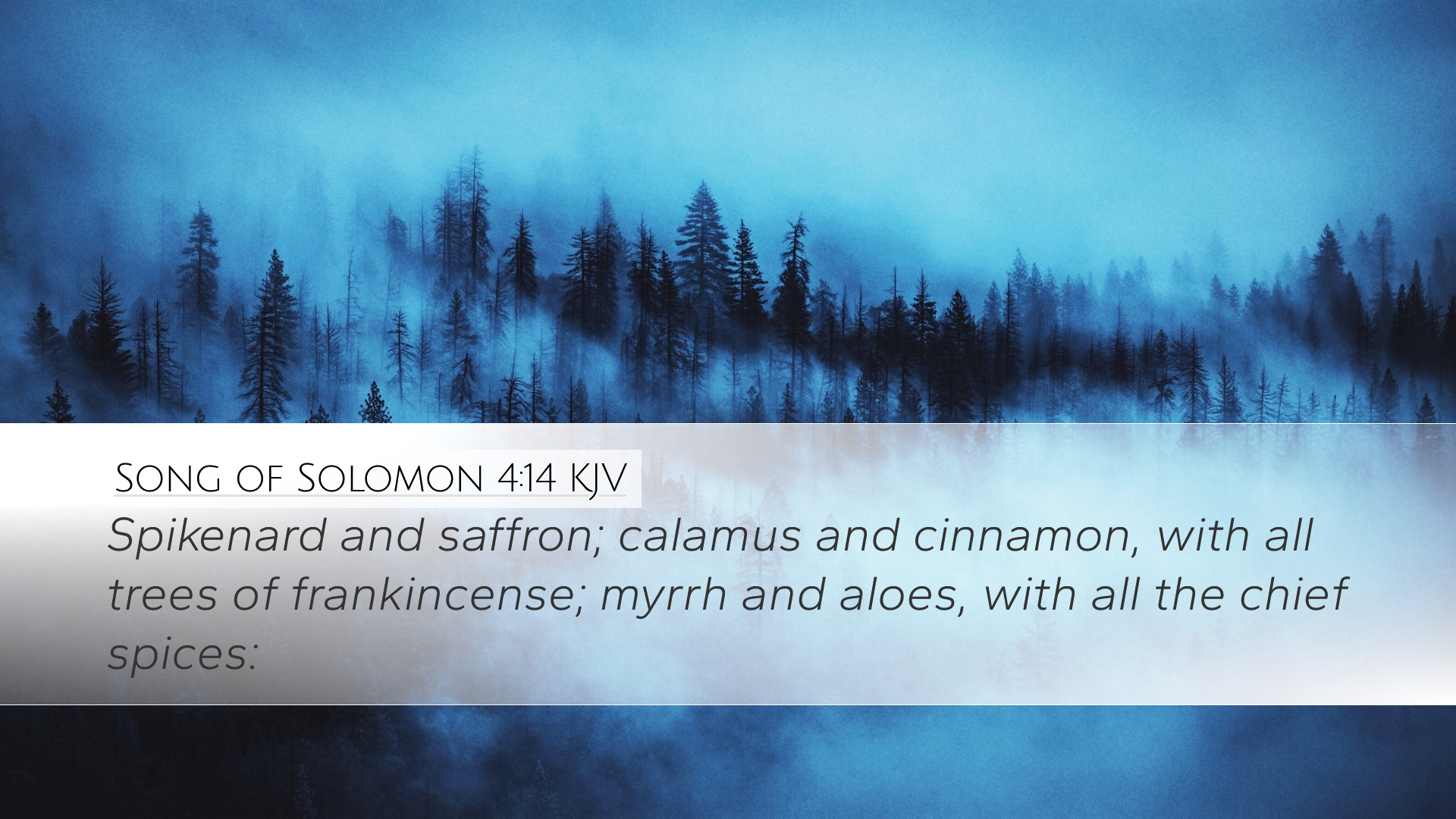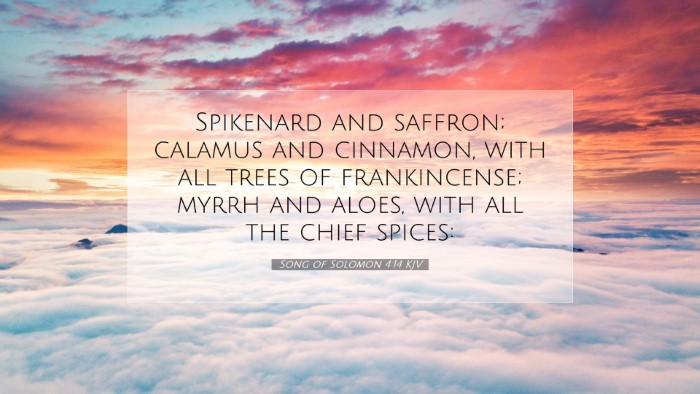Commentary on Song of Solomon 4:14
Verse Reference: Song of Solomon 4:14 - “Spikenard and saffron; calamus and cinnamon, with all trees of frankincense; myrrh and aloes, with all the chief spices:”
Introduction
The Song of Solomon is a unique text within the biblical canon, known for its rich imagery and profound portrayal of love. Song of Solomon 4:14 is particularly notable for its invocation of spices and aromatic plants, reflecting themes of beauty, love, and desire. This verse serves as a metaphorical depiction of the beloved, drawing on agricultural and sensory imagery to convey deeper spiritual truths.
Spikenard and Saffron
Matthew Henry elaborates on the significance of spikenard and saffron, both of which were prized for their fragrance and value in ancient societies. He notes that these spices symbolize the fragrance of Christ's love, which is both precious and fragrant:
- Spikenard: An aromatic oil often used for anointing, symbolizing purity and devotion.
- Saffron: A costly spice, representing the rarity and beauty of the beloved.
Calamus and Cinnamon
Albert Barnes provides insight into calamus and cinnamon, focusing on their historical uses and significance:
- Calamus: A fragrant plant associated with sweetness and grace; its inclusion implies a connection to the sweetness of love.
- Cinnamon: Often used in religious rites, it signifies holiness and the allure of divine love.
Symbolism of Trees and Spices
Adam Clarke expands on the symbolism associated with the ‘trees of frankincense’ mentioned in the verse. He draws attention to the symbolism of these natural elements:
- Frankincense: A symbol of worship and prayer, indicative of the sacredness of love and devotion between the lovers.
- Myrrh: Known for its anointing properties, it bridges the idea of suffering and sacrifice, highlighting the depths of true love.
- Aloes: Aromatic and associated with mourning, this spice suggests that love encompasses both joy and sorrow.
Interpreting the Imagery
The cumulative effect of these images conveys the richness and depth of love. Pastoral insights suggest that the beloved is not merely a physical entity but a representation of spiritual beauty and moral excellence. The use of such imagery invites the reader into a deeper appreciation of the beloved’s character, which includes virtue, affection, and holiness.
Theological Implications
Theologically, this verse invites reflection on the nature of divine love. As Henry emphasizes, the fragrances symbolize the characteristics of Christ's love, which are to be desired and treasured. The blending of these aromas can be seen as a representation of the unity and harmony found in love that is rooted in God:
- Holiness: The spices reflect God’s holy nature and the call for believers to engage in love that is pure and righteous.
- Intimacy: The intimate nature of this love suggests that true spirituality fosters a deep closeness with God and others.
- Transformation: Just as the fragrances permeate the air, so too does divine love transform those who encounter it.
Conclusion
In conclusion, Song of Solomon 4:14 serves as a rich tableau of love, inviting interpretation through its warm and aromatic imagery. For pastors and theologians, it provides a reflective point on the divine love that permeates Christian faith. Engaging with this text inspires deeper study into the attributes of love as depicted in the holy scriptures, encouraging believers to embody such love in their own lives.
Reflection Questions
- How do these images of spices resonate with your understanding of love today?
- In what ways can the qualities of these spices be reflected in your spiritual practices?
- What does the blending of earthly treasures into a portrayal of love teach us about the divine relationship we are invited into?


